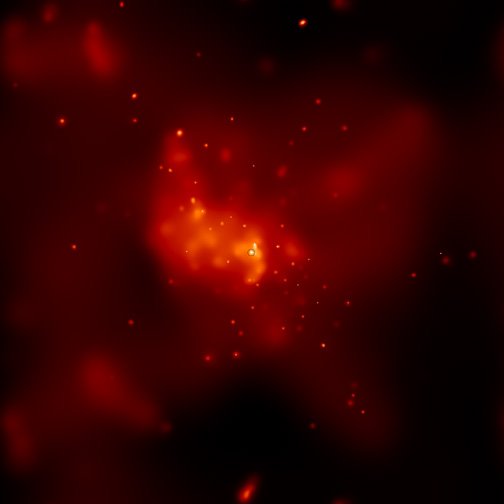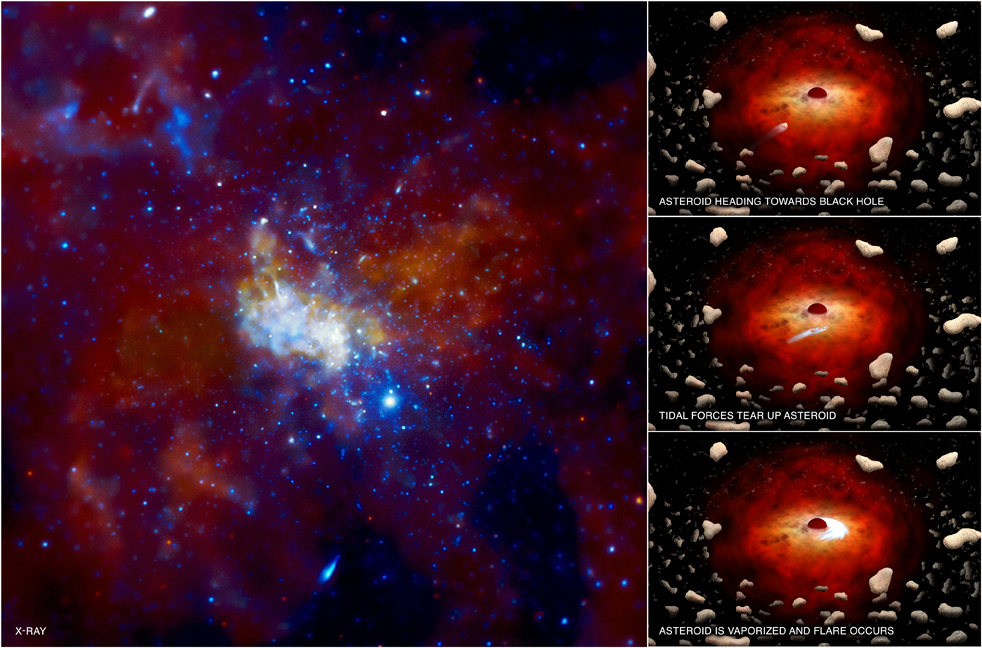
But back in February 2012, astronomers using the Chandra X-Ray Observatory detected the brightest flare ever observed from the central black hole, also known as Sagittarius A*. The flare, recorded 26,000 light years away, was 150 times brighter than the black hole's normal luminosity.
What causes these outbursts? Scientists aren't sure. But Sagittarius A* doesn't seem to be slowing down, even though as black holes age they should show a decrease in activity.

Astronomers involved in this new observation seem to concur with that line of thinking.
"Suddenly, for whatever reason, Sagittarius A* is eating a lot more," said Michael Nowak, a research scientist at MIT Kavli and co-author of a new paper in the Astrophysical Journal. "One theory is that every so often, an asteroid gets close to the black hole, the black hole stretches and rips it to pieces, and eats the material and turns it into radiation, so you see these big flares."
Astronomers detect black holes by the light energy given off as they swallow nearby matter. The centers of newborn galaxies and quasars can appear extremely bright, giving off massive amounts of energy as they devour their surroundings. As black holes age, they tend to slow down, consuming less and appearing fainter in the sky.
"Everyone has this picture of black holes as vacuum sweepers, that they suck up absolutely everything," says Frederick K. Baganoff, another co-author from MIT. "But in this really low-accretion-rate state, they're really finicky eaters, and for some reason they actually blow away most of the energy."
While such events like this big blast appear to be relatively rare, Nowak suspects that flare-ups may occur more frequently than scientists expect. The team has reserved more than a month of time on the Chandra Observatory to study Sagittarius A* in hopes of identifying more flares, and possibly what's causing them.
"These bright flares give information on the flaring process that isn't available with the weaker ones, such as how they fluctuate in time during the flare, how the spectrum changes, and how fast they rise and fall," said Mark Morris from UCLA. "The greatest importance of this bright flare may be that it builds up the statistics on the characteristics of strong flares that can eventually be used to [identify] the cause of such flares."
Even more intriguing to Baganoff is why the black hole emits so little energy. In 2003, he ran the very first observations with the then-new Chandra Observatory, and calculated that, given the amount of gas in its surroundings, Sagittarius A* should be about a million times brighter than it is - a finding that suggested the black hole throws away most of the matter it would otherwise consume.
The physics underlying such a phenomenon remain a puzzle that Baganoff and others hope to tease out with future observations.
"We're really studying the great escape, because most of the gas escapes, and that's not what we expect," Baganoff says. "So we're piecing out the history of the activity of the center of our galaxy."
Paper: Chandra/HETGS Observations of the Brightest Flare seen from Sgr A*
See a movie of the flare here.
Source: MIT



Reader Comments
to our Newsletter